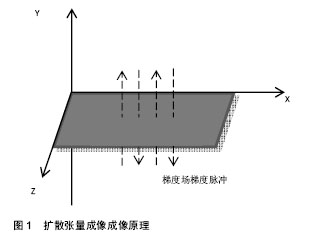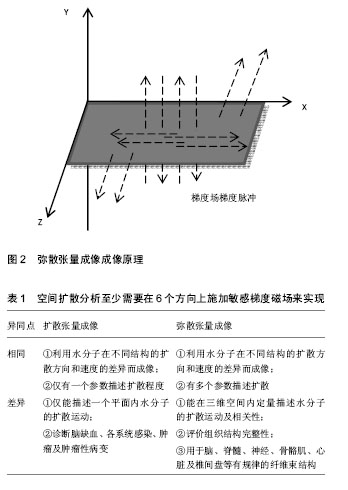| [1] Oyefiade AA, Ameis S, Lerch JP, et al. Development of short-range white matter in healthy children and adolescents. Human Brain Mapping. 2018;39(1):204-217. [2] Rutman AM, Peterson D J, Cohen W A, et al. Diffusion tensor imaging of the spinal cord: clinical value, investigational applications, and technical limitations. Curr Probl Diagn Radiol. 2018;47(4):257-269. [3] 张涛.磁共振扩散加权与弥散张量成像原理分析及比较[J].现代医用影像学,2017,26(2):369-370.[4] 刘辉,李长勤.磁共振全身弥散加权成像的基本原理及临床应用价值[J].医学影像学杂志,2013,23(7):1126-1129.[5] Koerte IK, Muehlmann M. Diffusion tensor imaging. MRI in Psychiatry. Springer, Berlin, Heidelberg, 2014:77-86. [6] Krogsrud SK, Fjell AM, Tamnes CK, et al. Changes in white matter microstructure in the developing brain-A longitudinal diffusion tensor imaging study of children from 4 to 11 years of age. Neuroimage. 2016;124:473-486. [7] Ewing-Cobbs L, Johnson CP, Juranek J, et al. Longitudinal diffusion tensor imaging after pediatric traumatic brain injury: impact of age at injury and time since injury on pathway integrity. Human Brain Mapping. 2016;37(11):3929-3945. [8] Hoy AR, Ly M, Carlsson CM, et al. Microstructural white matter alterations in preclinical Alzheimer’s disease detected using free water elimination diffusion tensor imaging. PLoS One. 2017;12(3):e0173982. [9] Giulietti G, Serra L, Spanò B, et al. Whole brain white matter histogram analysis of diffusion tensor imaging data detects microstructural damage in mild cognitive impairment and alzheimer's disease patients. J Magn Reson Imaging. 2018;48(3):767-779. [10] Guo Z, Liu X, Hou H, et al. 1H-MRS asymmetry changes in the anterior and posterior cingulate gyrus in patients with mild cognitive impairment and mild Alzheimer's disease. Compr Psychiatry. 2016;69:179-185. [11] Chitra R, Bairavi K, Vinisha V, et al. Analysis of structural connectivity on progression of Alzheimer's disease using diffusion tensor imaging. Signal Processing, Communication and Networking (ICSCN), 2017 Fourth International Conference on. IEEE. 2017:1-5. [12] Wang H, Huang Y, Coman D, et al. Network evolution in mesial temporal lobe epilepsy revealed by diffusion tensor imaging. Epilepsia. 2017;58(5):824-834. [13] Bao Y, He R, Zeng Q, et al. Investigation of microstructural abnormalities in white and gray matter around hippocampus with diffusion tensor imaging (DTI) in temporal lobe epilepsy (TLE). Epilepsy Behav. 2018;83:44-49. [14] Nucifora LG, Tanaka T, Hayes LN, et al. Reduction of plasma glutathione in psychosis associated with schizophrenia and bipolar disorder in translational psychiatry. Transl Psychiatry. 2017;7(8): e1215. [15] Schneider S, Götz K, Birchmeier C, et al. Neuregulin-1 mutant mice indicate motor and sensory deficits, indeed few references for schizophrenia endophenotype model. Behav Brain Res. 2017;322: 177-185. [16] Palaniyappan L, Radaideh A, Mougin O, et al. T167. Aberrant myelination of the cingulum bundle in patients with schizophrenia: a 7t mti/dti study. Schizophr Bull. 2018;44(Suppl 1):S180. [17] Tamnes CK, Agartz I. White matter microstructure in early-onset schizophrenia: a systematic review of diffusion tensor imaging studies. J Am Acad Child Adolesc Psychiatry. 2016;55(4):269-279. [18] Fatehi D, Naleini F, Gharib Salehi M. Evaluation of multiple sclerosis patients through structural biomarkers of diffusion tensor magnetic imaging and correlation with clinical features. J Chem Pharm Sci. 2016;9(2):830-837. [19] Hempel JM, Schittenhelm J, Bisdas S, et al. In vivo assessment of tumor heterogeneity in WHO 2016 glioma grades using diffusion kurtosis imaging: diagnostic performance and improvement of feasibility in routine clinical practice. J Neuroradiol. 2018;45(1):32-40. [20] Choi YS, Ahn SS, Lee SK, et al. Amide proton transfer imaging to discriminate between low-and high-grade gliomas: added value to apparent diffusion coefficient and relative cerebral blood volume. Eur Radiol. 2017;27(8):3181-3189. [21] 姜亮,殷信道.磁共振功能成像在脑肿瘤诊断中的应用价值[J].中国CT和MRI杂志,2015,13(1):112-115.[22] Iv M, Yoon BC, Heit JJ, et al. Current clinical state of advanced magnetic resonance imaging for brain tumor diagnosis and follow up. semin roentgenol. 2018;53(1):45-61. [23] Dubey A, Kataria R, Sinha VD. Role of diffusion tensor imaging in brain tumor surgery. Asian J Neurosurg. 2018;13(2):302. [24] Oda K, Yamaguchi F, Enomoto H, et al. Prediction of recovery from supplementary motor area syndrome after brain tumor surgery: preoperative diffusion tensor tractography analysis and postoperative neurological clinical course. Neurosurg Focus. 2018;44(6):E3. [25] Savardekar AR, Patra DP, Thakur JD, et al. Preoperative diffusion tensor imaging–fiber tracking for facial nerve identification in vestibular schwannoma: a systematic review on its evolution and current status with a pooled data analysis of surgical concordance rates. Neurosurg Focus. 2018;44(3):E5. [26] 胡先超,张少军,韩易,等.DTT成像联合神经导航在脑功能区肿瘤手术中的应用[J].中国微侵袭神经外科杂志,2017,22(3):119-122.[27] Okita G, Ohba T, Takamura T, et al. Application of neurite orientation dispersion and density imaging or diffusion tensor imaging to quantify the severity of cervical spondylotic myelopathy and to assess postoperative neurologic recovery. Spine J. 2018;18(2):268-275. [28] Rajasekaran S, Kanna RM, Chittode VS, et al. Efficacy of diffusion tensor imaging indices in assessing postoperative neural recovery in cervical spondylotic myelopathy. Spine. 2017;42(1):8-13. [29] Rindler RS, Chokshi FH, Malcolm JG, et al. Spinal diffusion tensor imaging in evaluation of preoperative and postoperative severity of cervical spondylotic myelopathy: systematic review of literature. World Neurosurg. 2017;99:150-158. [30] Yamasaki T, Fujiwara H, Oda R, et al. In vivo evaluation of rabbit sciatic nerve regeneration with diffusion tensor imaging (DTI): correlations with histology and behavior. Magn Reson Imaging. 2015; 33(1):95-101. [31] 崔婷婷,李松柏.腰椎间盘突出症患者受压神经根DTI与临床表现的相关性[J].中国医学影像术,2017,33(12):1869-1873.[32] Heckel A, Weiler M, Xia A, et al. Peripheral nerve diffusion tensor imaging: assessment of axon and myelin sheath integrity. PLoS One. 2015;10(6):e0130833. [33] Zhang J, Zhao H, Wang W, et al. GW28-e1057 Study on white matter injury after ischemic stroke evaluated by diffusion tensor imaging. J Am College Cardiol. 2017;70(16 Supplement):C176-C177. [34] Guo AH, Hao FL, Liu LF, et al. An assessment of the correlation between early postinfarction pyramidal tract Wallerian degeneration and nerve function recovery using diffusion tensor imaging. Genet Mol Res. 2017;16(1). doi: 10.4238/gmr16019035. [35] Goh SYM, Irimia A, Torgerson CM, et al. Longitudinal quantification and visualization of intracerebral haemorrhage using multimodal magnetic resonance and diffusion tensor imaging. Brain Injury. 2015;29(4):438-445. [36] Pashakhanloo F, Herzka D A, Ashikaga H, et al. Myofiber architecture of the human atria as revealed by submillimeter diffusion tensor imaging. Circulation. 2016;9(4):e004133. [37] Hata J, Mizuno S, Haga Y, et al. Semiquantitative evaluation of muscle repair by diffusion tensor imaging in mice. JBMR Plus. 2018;2(4):227-234. [38] amon BM, Froeling M, Buck AKW, et al. Skeletal muscle diffusion tensor-MRI fiber tracking: rationale, data acquisition and analysis methods, applications and future directions. NMR in Biomed. 2017; 30(3):e3563. [39] Stadelmann M A, Maquer G, Voumard B, et al. Integrating MRI-based geometry, composition and fiber architecture in a finite element model of the human intervertebral disc. J Mech Behav Biomed Mater. 2018; 85:37-42. [40] Wáng YXJ, Belavý DL, Vergroesen PPA, et al. On magnetic resonance imaging of intervertebral disc aging/authors' reply to wang: " on magnetic resonance imaging of intervertebral disc ageing". Sports Med. 2017;47(1):187. [41] Shen S, Wang H, Zhang J, et al. Diffusion weighted imaging, diffusion tensor imaging, and T2* mapping of lumbar intervertebral disc in young healthy adults. Iran J Radiol. 2016;13(1):e30069. |
.jpg)



.jpg)